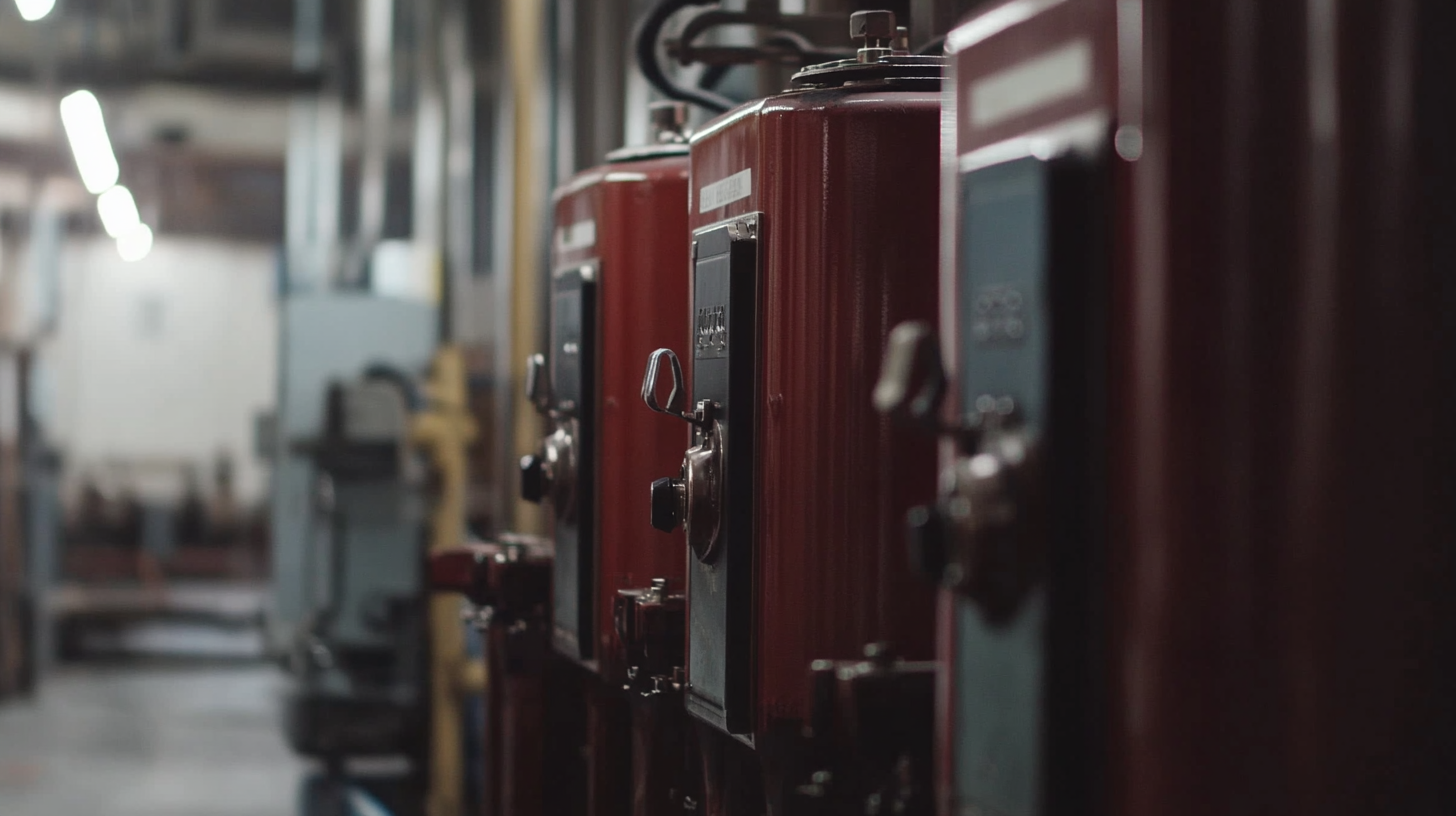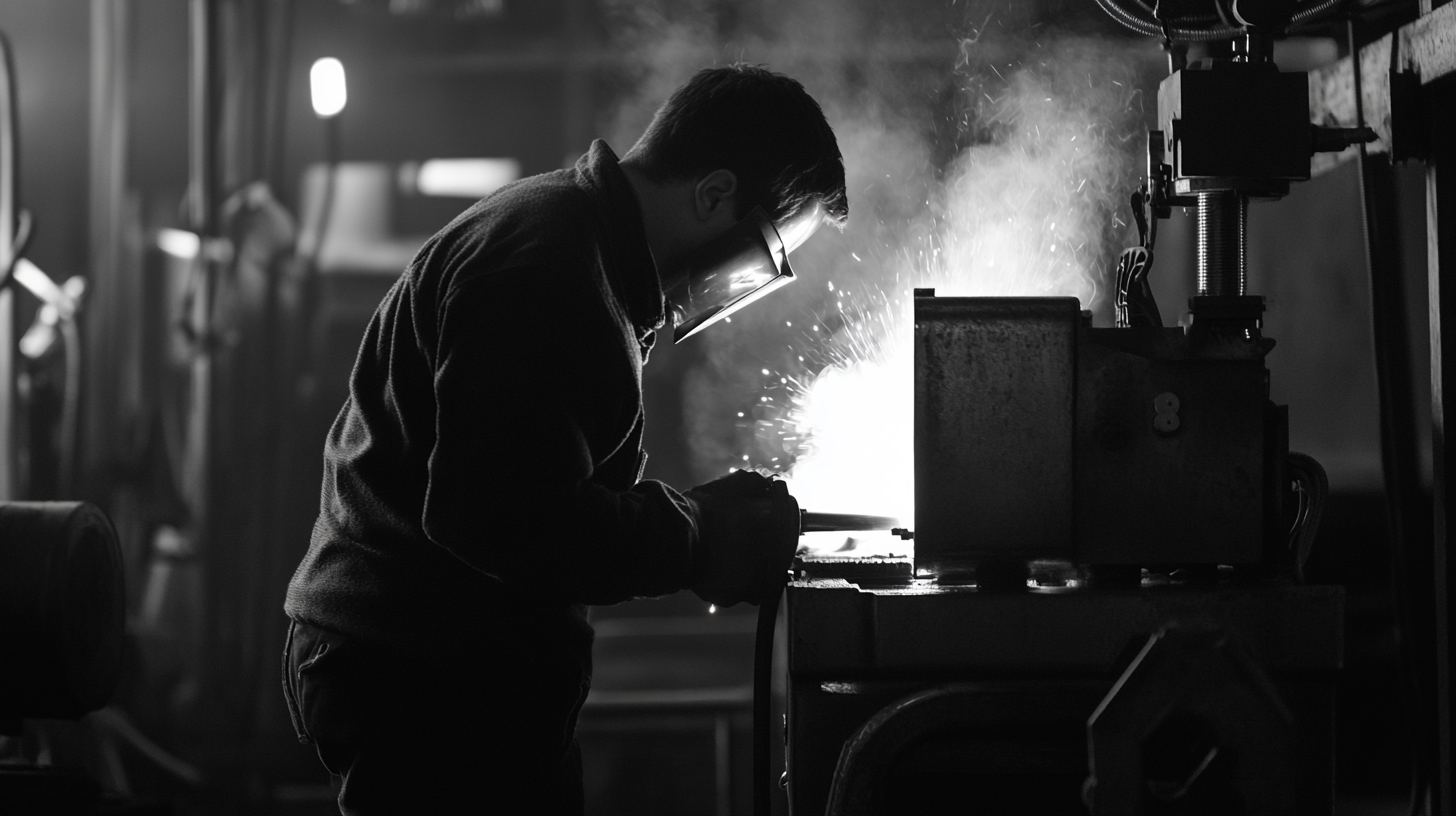In today's rapidly evolving manufacturing landscape, the demand for high-quality welder equipment has surged. A report by MarketsandMarkets indicates that the global welding equipment market is projected to reach USD 29.29 billion by 2025, growing at a CAGR of 4.2% from 2020. This growth reflects not only the increased industrial activity but also the rising need for precision and reliability in welding processes across various sectors, including automotive, construction, and aerospace. As companies aim to enhance productivity and maintain competitive advantages, sourcing premium welder equipment becomes critical.
However, sourcing welder equipment globally involves navigating a complex landscape of vendors, regulations, and quality certifications. According to a study by Research and Markets, the global welding robots market alone is expected to witness significant growth, demonstrating the increasing reliance on automation in welding. Choosing the right equipment is fundamental; it impacts efficiency, safety, and cost-effectiveness. In this essential guide, we will explore 10 key considerations that businesses must evaluate when sourcing premium welder equipment from global suppliers, ensuring they make informed decisions that align with their operational goals.

When sourcing premium welder equipment globally, it is essential to begin by identifying your specific needs. Understanding key specifications tailored to your unique applications is paramount. Consider factors such as welding process types, material compatibility, duty cycle, and power requirements. This foundational knowledge will enable you to narrow down your options effectively, ensuring that the equipment you choose aligns precisely with your operational demands. In addition to basic specifications, examining the technology integrated into the welding equipment can vastly impact your workflow. Features such as advanced control systems, automation capabilities, and energy efficiency ratings should be prioritized. For example, investing in equipment with enhanced control systems can lead to more consistent weld quality, hence reducing the risk of defects. Moreover, new technology often translates to improved productivity and lower operational costs, making it a worthwhile consideration during your selection process. Finally, don't overlook the importance of after-sales support and warranty options when evaluating potential suppliers. Reliable service and maintenance can extend the life of your welder, ensuring that your investment remains sound over time. By carefully assessing these key specifications and considerations, you can make informed decisions that will enhance your welding operations and contribute to your business's success.

When seeking high-quality welding gear, exploring global markets can significantly enhance your sourcing strategy. The proliferation of manufacturers across various regions allows buyers to find specialized welding equipment that meets their operational demands. For instance, Europe is known for its stringent quality standards and advanced technology in welding gear, making it a prime location for sourcing premium equipment. Investing time in research can lead you to reliable suppliers who prioritize both quality and compliance.
Emerging markets, such as those in Asia, offer competitive pricing without compromising on quality. Countries like China and India have rapidly evolved into manufacturing hubs, producing a wide range of welding equipment that adheres to international standards. Buyers should consider visiting trade fairs or establishing relationships with local suppliers to gain insights into product offerings and innovations. This hands-on approach not only helps in assessing the quality of the equipment but also aids in understanding the supply chain dynamics.
Additionally, leveraging online platforms and trade networks can facilitate access to diverse global suppliers. Utilizing these resources allows for comparative analysis of product specifications, pricing, and customer reviews. Moreover, being mindful of local regulations and certifications is crucial when sourcing globally to ensure that the equipment meets industry requirements. By strategically exploring these global markets, businesses can effectively source high-quality welding gear that enhances their operational efficiency and safety.

When sourcing premium welder equipment globally, evaluating supplier reliability is paramount. One of the first steps is to assess the manufacturer's credentials to ensure they meet the industry standards and regulations. Look for certifications such as ISO 9001, which indicates a commitment to quality management systems. Additionally, check for industry-specific certifications, which can demonstrate a manufacturer’s expertise in producing welding equipment.
Beyond certifications, it is essential to review a supplier’s history and reputation. Look for testimonials, case studies, or reviews from previous clients. A reliable supplier often has a track record of successful partnerships and satisfied customers. Engaging with other businesses in the welding sector can provide insights into a manufacturer’s reliability and customer service.
Another crucial aspect is to evaluate the supplier's production capabilities and technology. Understanding their manufacturing processes and the machinery they use can reveal the quality of the products they offer. A supplier who invests in modern technology and equipment is more likely to produce high-quality welder equipment consistently. Furthermore, consider visiting the production facility if possible, to gain firsthand knowledge of their operations and quality control measures. This on-site assessment can greatly enhance your confidence in the supplier's ability to deliver premium products.

Navigating the complexities of importing welder equipment requires a keen understanding of various international regulations and duties. Recent developments in countries like India and Ukraine highlight the significance of anti-dumping measures and import duties that can significantly affect sourcing strategies. For instance, India has recently imposed an anti-dumping duty on industrial laser machines, which includes welding equipment. This measure aims to protect the domestic manufacturing sector from foreign competition that may price their products below production cost. Consequently, companies looking to import such machinery must carefully analyze the additional costs associated with these duties, which can impact overall investment and profitability.
On the other hand, Ukraine's initiative to suspend import VAT and customs duties on certain energy-generating equipment reflects a strategic response to the ongoing energy crisis. This decision streamlines the process for acquiring vital equipment that aids in the restoration of essential infrastructure severely damaged during conflicts. For importers, understanding the specific categories that qualify for such exemptions can provide a significant advantage, enabling them to source necessary equipment more affordably and efficiently.
Moreover, as global markets face uncertainty, staying informed about these regulatory changes is crucial. Industry reports indicate that countries are increasingly utilizing anti-dumping duties and other trade measures to protect local industries, thereby affecting how businesses approach the acquisition of premium welder equipment. It is essential for companies to consult with trade experts and stay updated on import regulations to navigate these challenges effectively, ensuring compliance while maximizing the potential for operational success.
When sourcing premium welding equipment globally, understanding pricing strategies is critical for executing a cost-benefit analysis. The initial step in this process involves gathering comprehensive data on the prices of equipment from different countries. Variations in production costs, labor, and materials influence pricing significantly. Regions known for high-quality manufacturing may offer better durability and performance, often justifying a higher price point. It’s crucial to assess whether these long-term benefits balance the upfront costs.
Next, it’s essential to consider total landed costs, which encompass not only the purchase price but also shipping, tariffs, and handling fees. These hidden costs can significantly impact your budget. By comparing these total costs across suppliers, you can identify which options truly provide the best value for money. Additionally, engaging with multiple suppliers can create more competitive pricing, allowing for negotiations that can lead to cost reductions and more favorable terms.
Lastly, keep an eye on market trends and fluctuations in exchange rates, as these can affect the pricing landscape. A strong currency might make sourcing from certain countries more advantageous, while economic instability can introduce risks. By staying informed and agile in your approach, you can ensure that your sourcing strategy for premium welder equipment is both cost-effective and aligned with your operational needs.
